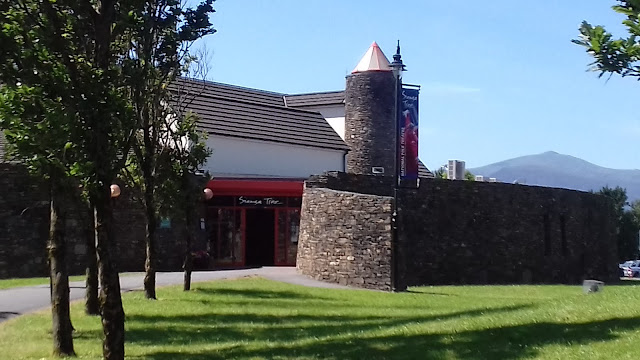

Damnatio Memoriae is the third solo exhibition by visual artist Conor O Grady in County Mayo since
2015. The exhibition features a series of gallery installations which have been created by him over
the past ten-years. Tracing aspects of his career to date which have interesting curatorial and social
connections to specific issues or events in contemporary society.
The title of the exhibition refers to the Latin term in which a person, organisation and even ideology
can be systematically excluded from historical documentation. The term has recently become
synonymous with the removal of controversial monuments and can be described as a form of
Censorship. Especially in relation to contemporary political structures and the removal of particular
marginalised or minority voices from public representation. This act of sanctioned, passive
aggression is the main reference point for this exhibition. Which references themes such as
consensual exploitation, marginality as well as institutional and actual violence in modern Irish
society. Damnatio Memoriae features a collection of sculptures, moving imagery, drawings and other works.
Many of which have never been exhibited and have not been shown in Ireland before. Works which
examine the contemporary culture and visual languages of particular violent, criminal, marginal or
sectional sub-groups within Irish society.
·
They will Never be Tamed, Until
the Leaves are off Their Trees and If I knew you
were coming, I’d have rushes for you are sculptural installation which
feature collections of native and invasive plant species. Collected in rural
areas along the border between the Republic of Ireland and Northern Ireland.
Cast in white clay using water taken from Lough Foyle and Lough Neagh.
If I knew
you were coming, I’d have rushes for you is ornamented by various examples of European
Union Postage Stamps which have been gathered from letters sent to the Child
Benefit Section of the Irish Department of Social Protection from other
European countries.
This work
follows from research related to specific issues affecting Irish biodiversity
and rurality.
·
The Choreography of Street
Violence combines re-appropriated and found footage
with original content to depict acts of sporadic violence which have occurred
on Irish Streets. Then edited to reveal the lack of intervention other than the
camera lens. These types of video clips are among the highest viewed imagery on
online platforms such as YouTube. This work was created in 2012 and was shown
in another context during DIT graduation exhibition in 2013
·
Where Open Borders Close is a work which was originally created for the group exhibition The
State We Are In, MART Gallery in 2016. It has been exhibited in a number of
contexts throughout Europe including the Culture Prize Presentation at the
Centre for Documentation, St. Polten, Austria in 2017. This showing of the work
reflects various events in Irish political and cultural history with original
footage of the border between Northern Ireland and the Republic of Ireland.
With most of this footage capturing images from the exact moment where one
crosses the border. This work is an excerpt from a larger body of work shown at
Custom House Studios and Gallery earlier this year.
·
Photographic installation (Various
Titles). Photography which documents sites where violent acts, murders or
other acts of criminality have taken place. Photographed in the immediate
aftermath of such activity or taken months or years after the incidents have
taken place. The work here is a direct evolution from the work created around The
Choreography of Street Violence. Exploring the spaces used for criminal or
anti-social behaviour and documenting the fleeting moments where this
underground activity connected with the everyday in interesting ways.
·
Turf Wars (An Inventory of
Dead Men). Large diagrammatical and info-graphic
drawings Which portray the links and interconnected nature of all the men
murdered as a result of their relationship to serious criminality in Dublin
City. This series of drawings began in 2009 and because of the ongoing nature
of these criminal groups has continued to grow until the present day. This
version of the work is an excerpt from research methods utilised to collate the
information. Highlighting the influence of dissident groups, the introduction of
heroin to Ireland and names of men murdered as a result of their involvement in
criminal networks in Dublin city.




















































